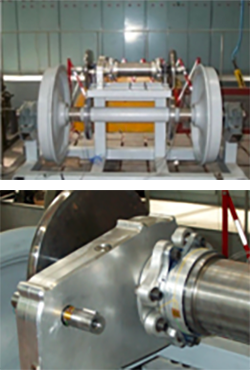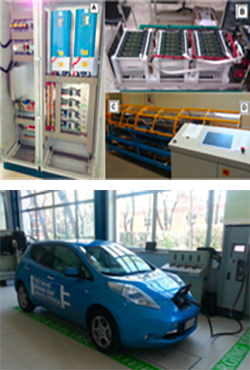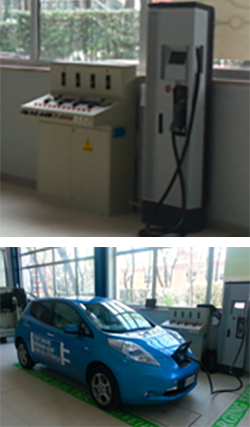ETR 500 - Scale Model
 Objective
Objective
It aims to reproduce, in detail, the same mechanical structure of transmission of an ETR500 bogie and their mechanical torsional oscillations in order to study the interaction between the external forces, i.e., electromagnetic force, friction forces, and internal forces like elastic torques.
Short description
The simulator is mainly composed of a mechanical transmission unit (motor, gearbox, wheel-set) fixed on a mobile frame and four wheels set on rigid axle. The transmission and the mobile frame lean on a couple of wheels by means of a wheel-set, which represents a pair of driving wheels of the locomotive. In order to obtain different touching forces between the pairs of contacting wheels there has been added a mass fixed on the mobile frame. The flywheels represent the inertia of translating masses, which is proportionally direct to the mass of the real train. The simulator is also composed of two additional spoke wheels in case it is necessary to simulate the elasticity of the rail. The propulsion system consists of inverter and induction motor. The motion resistances are simulated by an air-brake, which gives rise to a braking force independent of the speed, and by a dc generator, feeding ballast resistances, which gives rise to a force linearly dependent on the shaft speed.






 Objective
Objective Objective
Objective  Objective
Objective  Objective
Objective